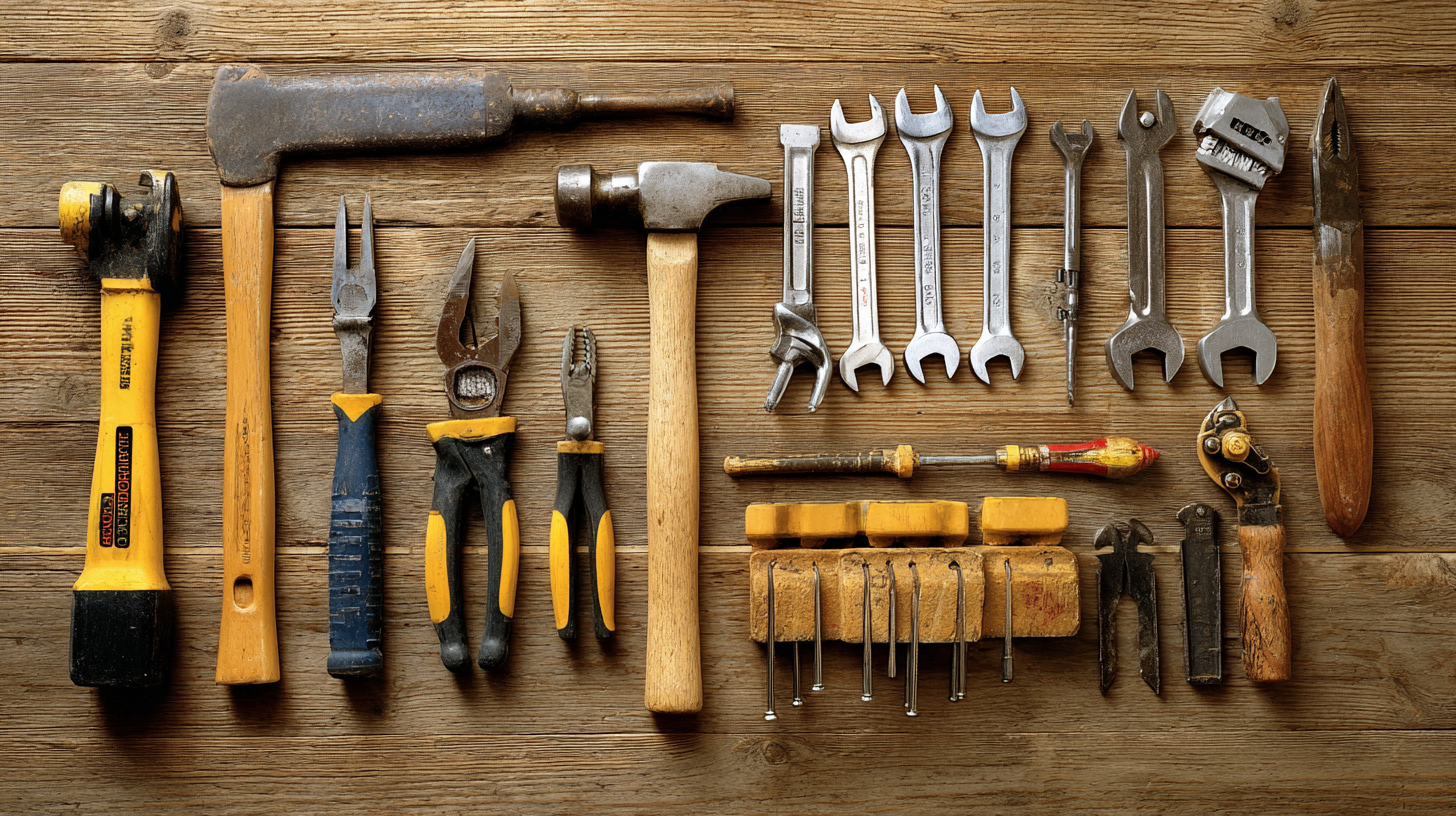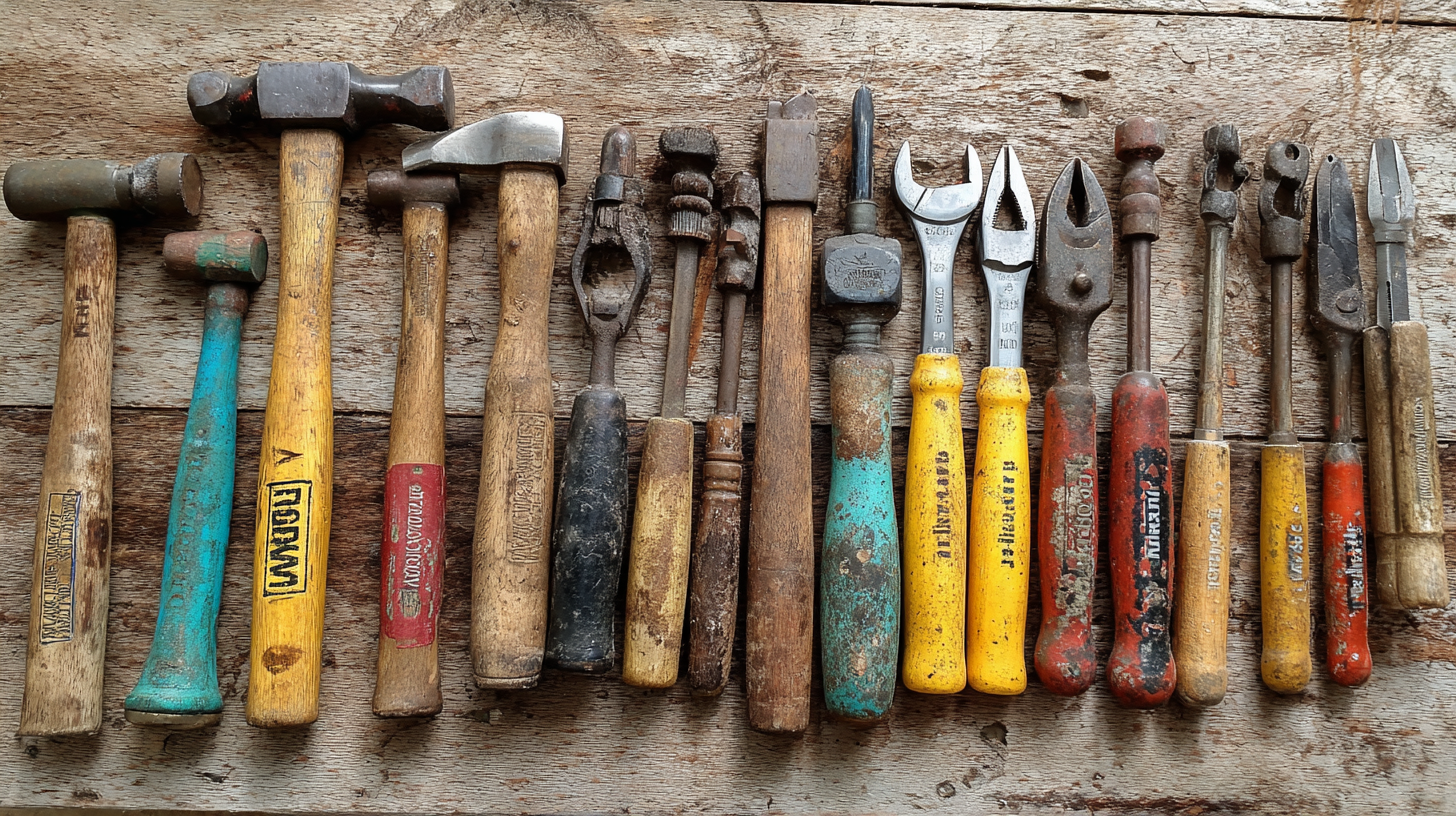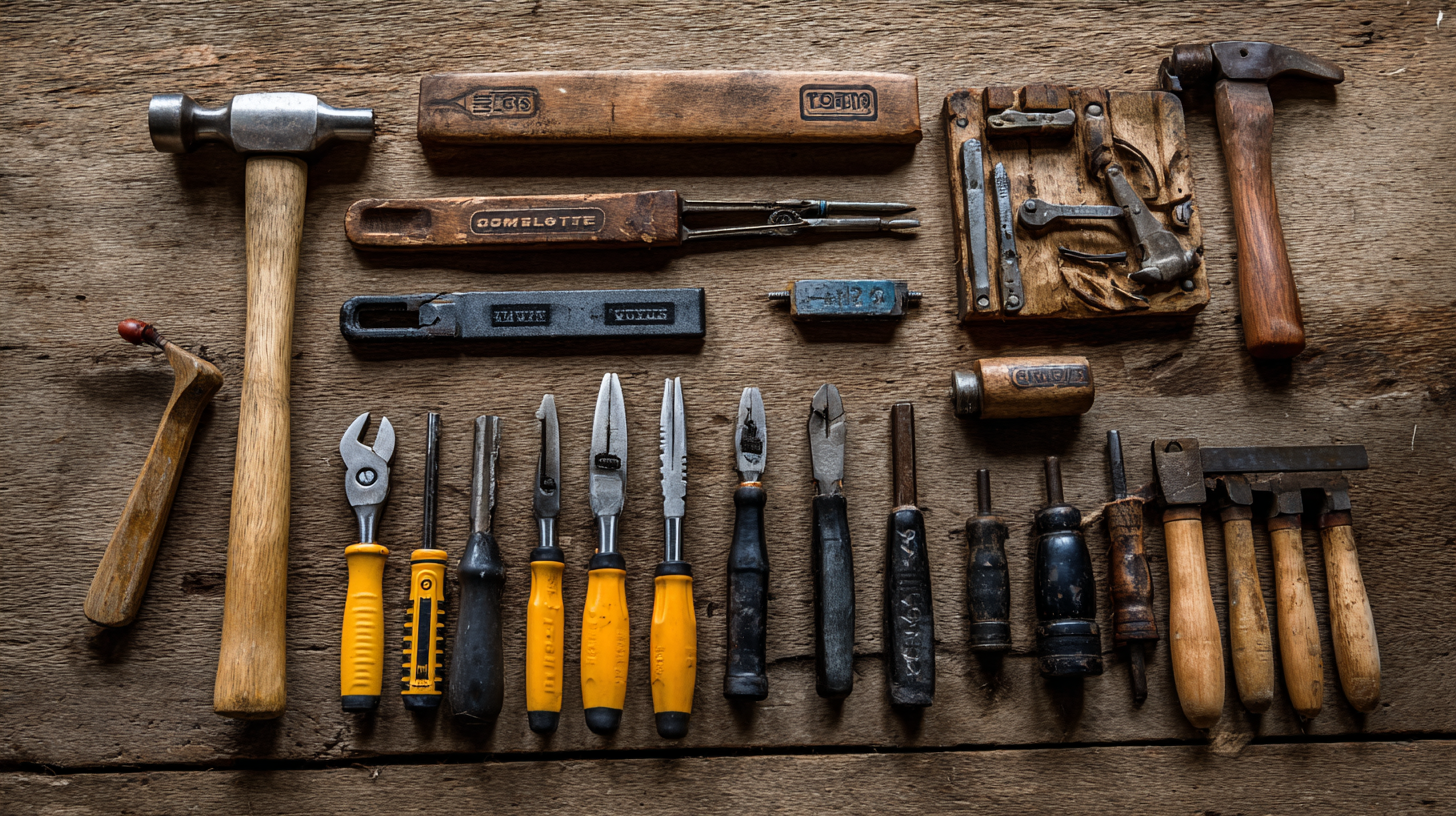Blog
Benefits of Choosing the Right Hand Tools for Your DIY Projects
When embarking on DIY projects, the choice of hand tools can significantly influence both the outcome and the efficiency of the task at hand. According to a recent market report, the global hand tools market is projected to reach USD 30 billion by 2025, reflecting a compound annual growth rate (CAGR) of 5.2% from 2020. This surge underscores not only the increasing interest in DIY endeavors but also highlights the importance of selecting the right hand tools. Proper hand tools not only enhance the precision and quality of work but also improve safety and ease of use, making them essential for both amateurs and seasoned professionals.

In this blog, we will explore the benefits of choosing the right hand tools for your projects, while also discussing the implications of industry certifications and tutorials to ensure optimal performance and satisfaction in your DIY tasks.
Importance of Selecting Quality Hand Tools for Long-Term Durability in DIY Projects
Selecting quality hand tools is crucial for ensuring long-term durability and efficiency in your DIY projects. According to a report by the Tool Manufacturers Association, high-quality hand tools can last up to 40% longer than their lower-priced counterparts. This durability means fewer replacements, which not only saves money in the long run but also reduces waste, making it a more sustainable choice for eco-conscious DIY enthusiasts.
Moreover, investing in quality tools contributes significantly to safety and performance. A study published in the Journal of Safety Research found that using reliable hand tools reduced the risk of workplace injuries by over 30%. For DIYers, this translates into a safer home environment while working on projects. Tools that are ergonomically designed and constructed from superior materials not only enhance the overall user experience but also allow for greater precision, ultimately leading to better project outcomes. Therefore, choosing the right hand tools is not just a matter of preference; it is a vital investment in the success and safety of your DIY endeavors.
Understanding Ergonomics in Hand Tool Design for Enhanced User Comfort and Efficiency
When embarking on DIY projects, the importance of ergonomics in hand tool design cannot be overstated. Tools that are thoughtfully designed to fit the natural contours of the hand help to minimize strain and fatigue during extended use. For example, a screwdriver with a contoured grip allows the user to apply greater torque without discomfort, making tasks like assembling furniture or tightening screws significantly easier. This enhances both comfort and efficiency, ensuring individuals can complete their projects with less risk of injury or frustration.
Moreover, ergonomic tools are not only about comfort but also about optimizing performance. Tools that consider the hand's natural movement patterns allow for a more precise application of force, leading to better results. For instance, pliers designed with an angled head enable users to access tight spaces more easily, enhancing the overall efficiency of the task. Choosing the right hand tools with ergonomic features means investing in not just ease of use, but also the quality of the finished project, making the entire DIY experience more enjoyable and productive.
Benefits of Choosing the Right Hand Tools for Your DIY Projects
Impact of Choosing the Right Tools on Reducing Project Time and Improving Accuracy
Choosing the right hand tools
significantly impacts the efficiency and precision of your DIY projects. According to a report by the National Association of Home Builders,
using high-quality tools can reduce project time by up to 30%. This time-saving advantage is particularly crucial for
hobbyists and professionals alike who aim to maximize productivity while minimizing effort. When the right tools are employed, tasks are completed faster,
enabling DIY enthusiasts to tackle more projects within shorter time frames.
Furthermore, the accuracy of finishes and assembly greatly improves with proper tooling. A study from the Home Improvement Research
Institute reveals that nearly 70% of DIYers experience frustrations with inaccuracies in their projects, often due to inadequate tools.
By utilizing hand tools designed for specific tasks, builders can achieve cleaner cuts, tighter joints, and overall more polished results. Investing in the right tools not only enhances
the quality of the work but also fosters confidence among DIYers, encouraging them to experiment with more complex projects.
Thus, the selection of appropriate hand tools shouldn't be underestimated;
it is a pivotal factor that influences both time efficiency and execution accuracy in DIY endeavors.
Capitalizing on Cost-Effectiveness: How Quality Hand Tools Can Save You Money Over Time
When embarking on DIY projects, the tools you choose can significantly impact both the quality of your work and your overall expenses. Investing in quality hand tools is one of the best ways to capitalize on cost-effectiveness in the long run. While cheaper alternatives may seem appealing initially, they often result in recurring expenses due to frequent replacements and repairs. High-quality hand tools, on the other hand, provide greater durability and performance, allowing you to complete tasks more efficiently and with better results.
Economies of scale play a crucial role in understanding how quality tools can save you money over time. When you opt for superior hand tools, you enhance your capabilities, potentially tackling larger projects that require less time and effort. Over time, the savings from reduced tool replacement costs, coupled with the efficiency gained in your DIY projects, can outweigh the initial investment. Just like in business, where companies benefit from producing in bulk, DIY enthusiasts can reap similar rewards by choosing well-made tools that support their ongoing projects. By focusing on quality, you not only streamline your workflow but also build a set of tools that will last for years to come.

Industry Insights: Statistics on Tool Failure Rates and Their Impact on DIY Success
When embarking on DIY projects, understanding the significance of selecting the right hand tools is crucial for success. Industry insights reveal that tool failure rates can drastically influence the outcomes of these projects. For instance, statistics show that inadequate tools can lead to a 30% increase in project delays and a 25% rise in safety incidents. This highlights the importance of choosing high-quality tools that meet the demands of your tasks, ultimately contributing to greater efficiency and safety.
To ensure you are equipped for success, consider these tips: First, invest in tools that are ergonomic and designed for precise functionality. This not only enhances your comfort during use but also reduces the likelihood of errors. Second, regularly maintain your tools, keeping them clean and well-lubricated to prevent unexpected failures. A well-maintained tool is often a reliable one. Lastly, don’t hesitate to consult reviews and ratings on various brands before making a purchase. Researching user experiences can provide valuable insights into the performance and durability of specific tools, leading to informed decisions that boost your DIY success.

